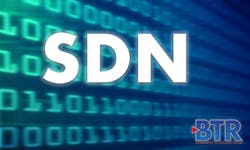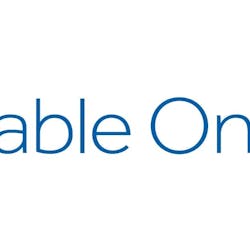In today’s communications and media markets, differentiation is critical to the survival of the fittest and to the profitability of the industry as a whole. As the traditional telecommunications players undergo multi-stage digital transformations, almost all are now well underway with their network virtualization strategies. Most are evaluating new services areas like network as a service, transport software-defined networking (SDN) and diverse virtual network functions as new ways to monetize the network. Continuous market evolution changes how consumers, enterprises and machines will use these new networks, and a similar if not better and more customer experience will also be expected. But the time needed to innovate and launch new services is unacceptably slow in many cases due to rigid network infrastructure composed of purpose-built hardware. As cable providers look to innovate, network infrastructure evolution is a core transformational goal.
The cable industry has taken a somewhat wait-and-see approach in the initial stages of SDN and network functions virtualization (NFV), likely watching the impact of the transitions from its fixed-line and mobile competition and the overall take-up of virtual services. Yet thanks to pressures from changes in customer demands, including the impact of cord-cutters and those eschewing $100+ cable bills in favor of streaming services, the cable provider is being forced to provide value, price and experience that will keep customers connected. As wireless providers invest in 5G networks with gigabit capable bandwidth and the over-the-top (OTT) providers continue to gain traction, service creativity that incorporates on-demand, streaming and partner-delivered services is one of the only ways to keep a competitive position.
Recently, the cable industry has started to take its own journey towards SDN and NFV and, in some cases, is showing some bleeding-edge movement towards the embrace of new functionality that will lead to the virtualization of access networks. The efforts of both CableLabs and SCTE to drive technology standards forward have been pivotal to the movement of the industry toward a stronger competitive position. Taking advantage of pushing greater capabilities to the edge of the network infrastructure will help the cable provider to stay innovative.
Networks on Edge
As discussions surrounding network virtualization have shifted recently from replacing boxes to optimizing customer experience, service providers are already looking for methods to monetize unique service offerings, which puts both virtualization and monetization into focus. There are many ways in which adopting SDN/NFV can translate into customer experience benefits. For cable, that means moving much of the flexibility to the edge.
The move towards greater intelligence at the edge is based on two virtualization strategies: CORD and HERD. CORD, or Central Office Re-architected as a Data Center, is a telecommunications virtualization initiative that brings together SDN/NFV with cloud technology and scale that allows the central office to scale up and down as necessary based on demand. It also facilitates the configuration of newer services based on the real-time demands of the customer at a specific time. As is typical with any virtualization roll-out, it starts as a hybrid process, whereby cable providers can leverage a common hardware and software infrastructure to offer traditional connectivity as well as cloud services for residential, enterprise and mobile customers. This applies for both B2C and B2B customers, allowing service management in almost real time. The cloud-based model also opens the delivery options to external partners, who can more easily offer complementary services to their common customers with a variety of partnership models. This in turn means faster time-to-service and time-to-revenue.
HERD, or Head End Re-architected as a Data Center, is a cable-specific adaptation of CORD and further expands on the benefits of virtualization, pushing greater capacity and intelligence to the edge. HERD uses virtualization as a core principle to gain increased performance for streaming and/or cached video services. The ability to cache is of particular relevance, as the user experience can be greatly improved if content is stored on local servers, as it helps to reduce latency issues and speed time to consumption. Using HERD, the cable provider leverages the cloud-based data center approach that can give an early competitive edge today, allowing service innovation, speed and guaranteed quality of service and ultimately keep the customer happy. This, along with greater capacity from fiber that can be placed closer to homes, will keep services creative, innovative and high quality.
As cable providers await the competitive threats from wireless telecommunications providers rolling out their faster 5G networks and gigabit bandwidth capabilities, embracing virtualization is a logical and even necessary step to stay competitive. We can expect that most cable providers will need to act more creatively by 2020, as 5G becomes a reality. Technology-led service innovation, whether via programming decoupling, OTT service bundling or customer-specific service bundles, will enable new ways to give customers what they want, deliver a personalized experience and have the underlying agility to respond to market changes in real time. Just as it’s easier to shop at a local grocery store than one way across town, it’s easier for a cable company to deliver its services from the headend down the road rather than from a random data center in the cloud that could be hundreds of miles away.
Paul Hughes is Director of Strategy at Netcracker Technology.





